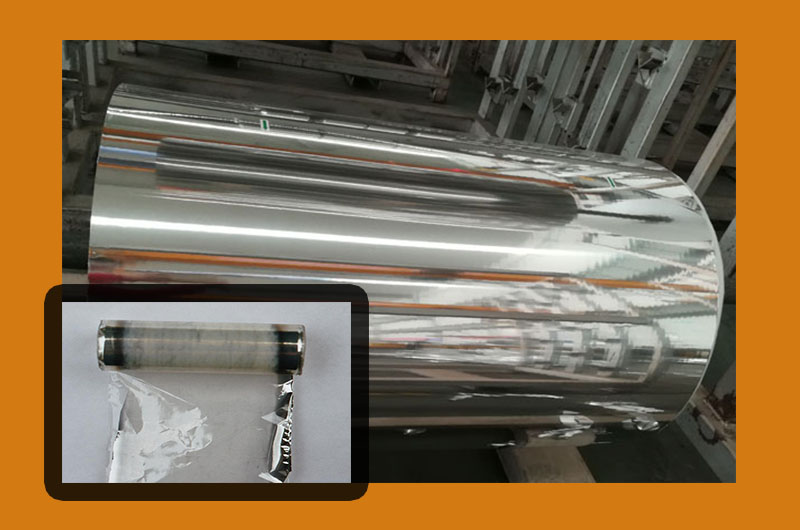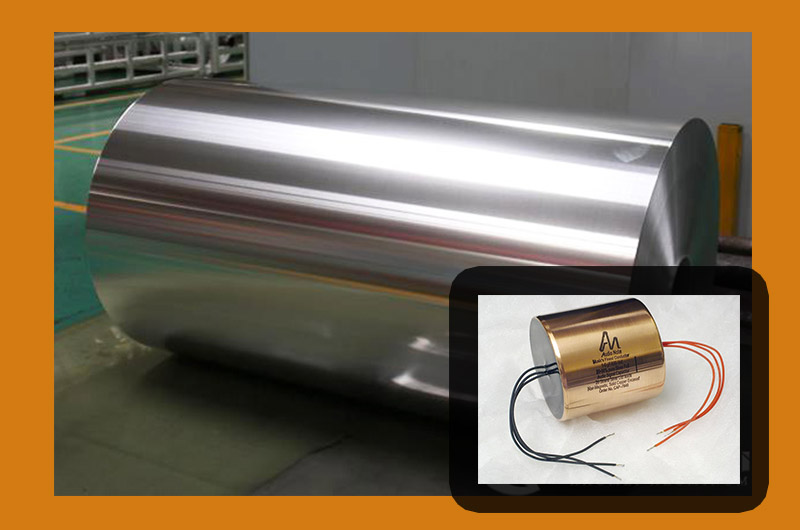- What is Electronic Aluminum Foil?
- Composition and Manufacturing
- Properties of Electronic Aluminum Foil
- Electronic Aluminum Foil Specifications
- Classification of Electronic Aluminum Foil
- Applications of Electronic Aluminum Foil
- Conclusion
In the ever-evolving landscape of electronic devices, the demand for flexible and lightweight components has led to the development of innovative materials. Electronic Aluminum Foil (EAF) is one such groundbreaking material that has garnered significant attention for its versatility and unique properties.

What is Electronic Aluminum Foil?
Electronic Aluminum Foil (EAF) is a specialized type of aluminum foil that is engineered for electronic applications.
Unlike conventional aluminum foil used in packaging and kitchen applications, EAF is designed with specific properties to meet the demands of electronic devices.
It plays a crucial role in flexible electronics, enabling the creation of lightweight, flexible, and conductive components.
Electronic aluminum foil is processed from aluminum material into aluminum foil, then undergoes surface corrosion treatment and oxidation treatment, and then is rolled and finally made into a capacitor. Electronic aluminum foil is a key raw material for the production of aluminum electrolytic capacitors.
Composition and Manufacturing
Electronic Aluminum Foil is a thin layer of aluminum that is specially treated to enhance its electrical conductivity and flexibility. The manufacturing process involves depositing a thin layer of aluminum onto a flexible substrate, typically made of polymer materials like polyethylene terephthalate (PET) or polyimide. The aluminum layer is often coated with protective materials to prevent oxidation and enhance durability.
Properties of Electronic Aluminum Foil
1. Conductivity
EAF boasts excellent electrical conductivity, making it an ideal material for various electronic applications. The conductivity of aluminum allows for efficient transmission of electrical signals, contributing to the overall performance of electronic devices.
2. Flexibility
One of the key features of Electronic Aluminum Foil is its flexibility. Unlike traditional rigid circuit boards, EAF can be bent, twisted, and folded without compromising its structural integrity. This flexibility opens up new possibilities for designing and manufacturing electronic devices with unconventional form factors.
3. Lightweight
Electronic Aluminum Foil is exceptionally lightweight, making it suitable for applications where weight is a critical factor. This characteristic is particularly advantageous in industries such as aerospace, wearable technology, and automotive, where lightweight materials contribute to improved efficiency and performance.

Electronic Aluminum Foil Specifications
| Typical alloy | 3003, 1070, 1100A |
|---|---|
| Temper | H18 |
| Thickness (mm) | 0.015-0.2 |
| Width (mm) | 100-1600 |
| Length (mm) | Coil |
| Treatment | mill finish |
| Standard | ISO SGS ASTM ENAW |
| Packaging | Standard seaworthy export packaging. Wooden pallets with plastic protection for the coil and sheet. |
Classification of Electronic Aluminum Foil
Electronic Aluminum Foil can be classified based on its intended application and specific properties. Common classifications include:
Flexible Printed Circuits (FPC) Foil
Tailored for use in flexible printed circuits, this type of EAF is optimized for efficient signal transmission and flexibility.
Battery Foil
Electronic Aluminum Foil is often used in the production of batteries, where its conductivity and lightweight properties contribute to the overall performance of the battery.
Capacitor Foil
Capacitors require materials with high conductivity and specific dielectric properties. EAF used in capacitors is engineered to meet these requirements.
LED Foil
In the production of LED (Light Emitting Diode) devices, Electronic Aluminum Foil is employed for its conductivity and ability to be shaped into intricate designs.
Electronic aluminum foil is categorized based on the manufacturing process. It is divided into electronic aluminum foil and electrode foil.
Electronic Aluminum Foil: This is a general term for the aluminum foil used in electronic applications.
Electrode Foils
Etched Foils: These foils undergo an etching process, likely to increase the surface area and improve capacitance.
Activated Foils: These foils may undergo a process to activate or enhance specific properties for capacitor applications.
Applications of Electronic Aluminum Foil
Flexible Printed Circuits (FPCs)
EAF is commonly used in the production of Flexible Printed Circuits, which are essential components in many electronic devices. FPCs enable the connection of various electronic components in a flexible and space-efficient manner, making them crucial for applications like smartphones, tablets, and wearable devices.
- Aluminum Alloy: 1xxx series or 8xxx series alloys are often used for FPCs due to their high formability and excellent conductivity.
- Temper: O (annealed) or H18 for improved strength without sacrificing flexibility.
Flexible Displays
The flexibility of Electronic Aluminum Foil has paved the way for the development of flexible displays. From curved television screens to rollable smartphones, EAF plays a vital role in creating displays that can conform to different shapes without sacrificing performance.
- Aluminum Alloy: 1xxx series or 3xxx series alloys are commonly used for flexible displays due to their high formability and corrosion resistance.
- Temper: O (annealed) or H19 for a good balance between flexibility and strength.
RFID Tags
Radio-Frequency Identification (RFID) tags rely on EAF for their antennas. The lightweight and flexible nature of the foil make it an excellent choice for integrating RFID technology into packaging, logistics, and retail applications.
- Aluminum Alloy: 1xxx series or 3xxx series alloys are suitable, considering their formability and conductivity.
- Temper: O (annealed) or H16 for a balance between flexibility and strength.
Automotive Electronics
In the automotive industry, Electronic Aluminum Foil is used in flexible circuits for applications like in-car entertainment systems, dashboard displays, and other electronic components. Its lightweight nature is especially beneficial in vehicles where reducing weight is a priority for fuel efficiency.
- Aluminum Alloy: 5xxx series or 6xxx series alloys are often used in automotive applications due to their good strength-to-weight ratio and corrosion resistance.
- Temper: H32 or H34 for a combination of strength and formability, considering the mechanical demands of automotive electronics.
Conclusion
Electronic Aluminum Foil represents a significant leap forward in the realm of flexible electronics.
Its unique combination of conductivity, flexibility, and lightweight properties has enabled the creation of electronic devices that were once deemed impossible.
As technology continues to advance, the applications of EAF are likely to expand, influencing the design and functionality of the electronic devices we use in our daily lives.
The ongoing research and development in this field promise a future where flexibility and performance coexist seamlessly in the world of electronics.
